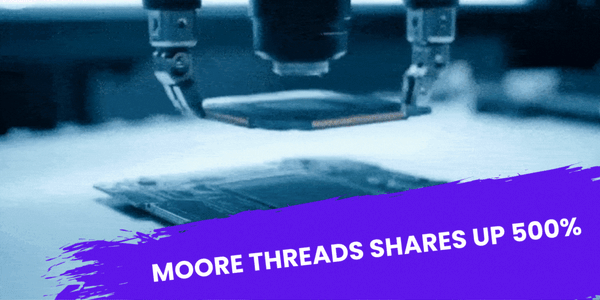This is Worth Checking Out….


As we step into September, the month that keeps traders on their toes, it’s time to buckle up for what’s known as the "September Effect."
You might not know this, but September holds the crown for being the most turbulent month for stocks.
The S&P 500 has a reputation for hitting some turbulence around this time of year, and 2024 is shaping up to be no different.
With the Fed's next rate decision looming, geopolitical tensions flaring up, and trade wars on the horizon, we’re staring down the barrel of a perfect storm of uncertainty.
But here’s the thing: while some see danger, savvy traders see potential. This is the time to be sharp, to seize the opportunities hidden in the market's twists and turns.
In our upcoming section, we'll also get a sneak peek at an inspiring investor who accurately predicted the 2008 market downturn.
Look out for valuable valuable lessons that you can learn from his insights.

☠️ Why is September The Worst Time of the Year For Stocks
September has a notorious reputation for market volatility. This year, the S&P 500 is facing a perfect storm of uncertainty, with Fed rate decisions, geopolitical tensions, and trade wars all poised to disrupt the markets.
🇪🇺 European Markets Stumble as September Begins
European markets opened September on a shaky note, with investors grappling with a mix of economic concerns and corporate developments. What's behind the market's nervous start to the month?
🪙 🏛️ Central Banks Gold Rush Continues, But Bitcoin's Continues Shining
Central banks worldwide have been on a gold buying spree, setting record levels of purchases in 2024. However, despite this surge in demand for the precious metal, Bitcoin has continued to outperform, showcasing its allure as a digital store of value.
👀 Are These Two Stocks Worth a Look?
Warren Buffett's recent additions to Berkshire Hathaway's portfolio have sparked interest among investors. But are these two stocks truly undervalued gems, or are they overhyped?
⏳ Market Retreat as Traders Await Crucial Data
European stocks pulled back from record highs as investors braced for a data-packed week that could significantly influence central bank monetary policy decisions.
🧭 Market Diversification Pays Off as Fed Rate Cuts Approach
As investors diversify their portfolios beyond tech stocks, value stocks and small caps are gaining momentum, offering a promising outlook ahead of the Federal Reserve's expected interest rate cuts.
🕹 Nikkei Reverses Early Gains, Reflecting Global Market Caution
The Nikkei 225 Index opened September on a cautious note, reversing early gains amid global economic uncertainty. The yen's strength and potential impact on Japanese exporters also add to market complexities.

Volume Weighted Average Price (VWAP)
VWAP calculates the average price of a stock over a specific period (like a trading day), but it gives more weight to prices with higher trading volume.
This means it reflects the prices where most of the action happened, not just the highest or lowest points.
What to Look For:
- Benchmark: VWAP is often used as a benchmark to assess the current price of a stock. If the price is above VWAP, it might suggest the stock is overvalued, while a price below VWAP could indicate undervaluation.
- Support and Resistance: VWAP can act as a dynamic support or resistance level. In an uptrend, the price tends to bounce off VWAP when it falls, while in a downtrend, the price tends to stall at VWAP when it rises.
- Entry/Exit Points: Traders often use VWAP as a guide for entering or exiting trades. Buying below VWAP and selling above VWAP can be a common strategy.

American investor Michael Burry’s life is proof that sometimes, the best way to win in the market is to do what no one else is doing.
Burry, who’s probably best known for predicting the 2008 financial crisis, made his mark by doing what most people wouldn’t dare: going against the crowd.
While everyone was busy riding the housing market wave, Burry was quietly betting on its collapse.
And when the crash came, his foresight turned $100 million into over $700 million.
That’s the kind of move that turns heads—and wallets.
So, what can we, as traders, learn from Burry?
First, trust your instincts, even if they go against the crowd.
Second, adversity isn’t a barrier; it’s a motivator. Burry’s early life wasn’t easy—he had a glass eye due to a childhood tumor and was later diagnosed with Asperger’s.
But instead of letting these challenges define him, he used them to sharpen his focus and hone his skills.
It’s a lesson for all of us: our setbacks can be the very things that drive us to greatness.
Lastly, his success wasn’t just about making the right call—it was about having the courage to make it.
So next time you’re staring at your trading screen, wondering if you should follow the crowd or trust your gut, think of Michael Burry.
And hey, if nothing else, it’s a great story to tell the next time you’re at a trading seminar!





